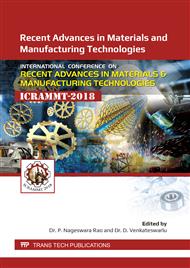p.433
p.439
p.444
p.451
p.461
p.466
p.472
p.478
p.484
Experimental Investigation of Proton Exchange Membrane (PEM) Fuel Cell Using Different Serpentine Flow Channels
Abstract:
Proton exchange membrane fuel cell (PEMFC) system is an advanced power system for the future that is sustainable, clean and environmental friendly. The flow channels present in bipolar plates of a PEMFC are responsible for the effective distribution of the reactant gases. Uneven distribution of the reactants can cause variations in current density, temperature, and water content over the area of a PEMFC, thus reducing the performance of PEMFC. By using Serpentine flow field channel, the performance is increased. Two types of serpentine flow field channels are implemented such as curved serpentine flow field channel and normal serpentine flow field channels. The result shows that curved serpentine flow field channel gives better current density and power density, thus increasing the performance of PEMFC.
Info:
Periodical:
Pages:
461-465
Citation:
Online since:
August 2019
Authors:
Price:
Сopyright:
© 2019 Trans Tech Publications Ltd. All Rights Reserved
Share:
Citation:


